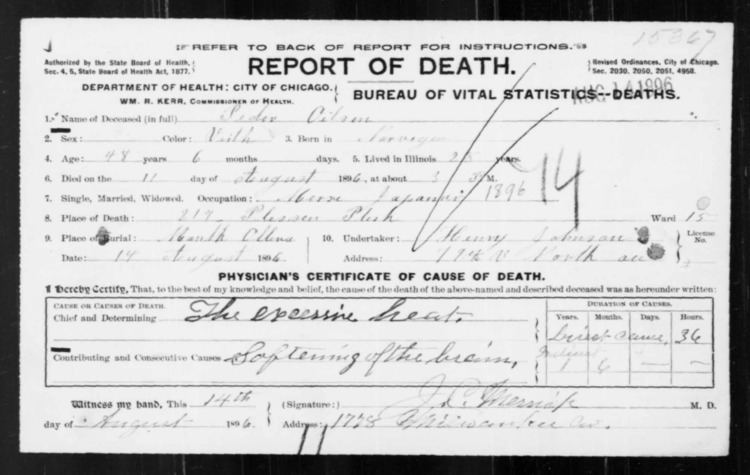 | ||
The 1896 Eastern North America heat wave was a 10-day heat wave in New York City, Boston, Newark, New Jersey and Chicago that killed about 1,500 people in August 1896.
History
There were 11 days of temperatures above 90 °F (32 °C) with 90 percent humidity and little breeze. The temperatures did not drop at night. It caused more deaths than the 1863 New York City draft riots or the 1871 Great Chicago Fire. A majority of the deaths were of working-class men in their twenties who performed manual labor.
The New York City Public Works Commissioner ordered that his worker's shifts be modified so they would not be working during midday, and he had fire hydrants opened to cool people on the street. Theodore Roosevelt, the New York City Police Commissioner distributed free ice from local police stations. After accidental deaths from people falling off the roofs they were sleeping on, the New York City Parks Department allowed people to sleep in parks overnight.
